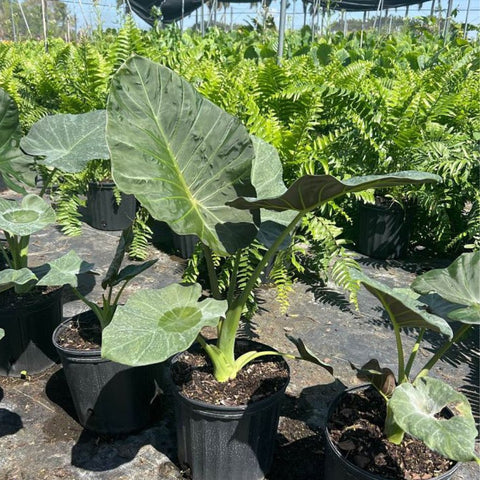Preparing the Garden for Spring
Spring is a time of renewal, a season when nature awakens from its winter slumber, ready to bloom afresh. For gardening enthusiasts, it's the perfect opportunity to rejuvenate their gardens, making them come alive with vibrant colors and textures. But before the blossoms appear, ensuring your garden is ready to embrace the season is crucial.
A. Soil Preparation
For a garden to thrive, the foundation—its soil—must be well-prepared. A robust soil base ensures that your plants will get the necessary nutrients and stability to grow vigorously.
Importance of Well-Prepared Soil
Healthy soil is the secret sauce to a flourishing garden. It provides essential nutrients, anchors plants, and retains the water they need for growth. As such, soil preparation should be your first focus during spring. It determines the overall health of your garden and can save you from future hassles related to plant disease and nutrient deficiencies.
Testing Soil pH and Nutrient Composition
The first step in soil preparation is understanding its current state. You can achieve this by testing the soil's pH and nutrient composition. Various DIY testing kits are available, or you can send a sample to a professional lab for more detailed insights. Once you have the results, you can adjust the soil's properties to better suit the plants you wish to grow.
Ironically, plants, much like humans, can be picky eaters, thriving best under particular conditions. For instance, the Agapanthus (Lily of the Nile) prefers slightly acidic to neutral soil pH. Knowing these details helps you cater to their needs better.

Enhancing Garden Structure
Beyond the basics of soil preparation, the structure of your garden also plays a meaningful role in its functionality and beauty. Spring is the ideal time to make structural changes that will enhance the aesthetic and practical aspects of your outdoor space.
B. Creating Garden Zones
Segmenting your garden into different zones can greatly increase its organization and usability. These zones can include vegetable patches, flower beds, and relaxation areas.
Utilizing Companion Planting
Companion planting is a method where certain plants are grown together for mutual benefits, such as pest control or nutrient uptake. For instance, planting carrots alongside your tomatoes can improve growth as these plants have different nutrient needs and root structures, preventing overcrowding.
Vertical Gardening Techniques
If space is a premium, vertical gardening can be a lifesaver. Using trellises or wall-mounted planters allows you to grow more plants in a smaller footprint, optimizing your available space.
Consider lush vertical displays of the versatile Alexander Palm. Its tall, slender growth caters perfectly to these needs, creating visual interest while maximizing your garden's vertical space.
C. Implementing Water Features
Installing a water feature can bring an element of tranquility to your garden. A small pond or a birdbath can encourage biodiversity by attracting different species of birds and insects.
D. Future-Proofing Your Garden
To safeguard your garden against unpredictable weather conditions, and to keep maintenance low, consider drought-resistant plants or smart irrigation systems. Agave species, such as the Blue Agave, are known for their resilience and can survive with minimal water.

Spring Planting Tips
With your foundation ready, spring planting can begin in earnest. Here are some hacks to get the most out of this active planting period.
A. Choosing the Right Plants
Selecting appropriate plant species is key to creating a garden that's both beautiful and easy to maintain.
Natives vs. Exotics
Native plants are typically more resilient concerning local climate and pests, but exotic plants can offer unique aesthetics and flavors. Depending on your goals, mix these plant types to create a diverse yet practical garden.
For a low-maintenance garden, explore Plantology's selection of exotic Adonidia Palms, which can add a special tropical touch without aggressive care needs.
B. Timing Your Planting
The timing of when you introduce plants into your garden is crucial. Most seeds and saplings have recommended planting seasons to ensure successful growth.
Understanding Frost Dates
Frost dates signify the last expected day of frost in spring and the first in autumn. Planting just after the last frost date ensures your plants are less susceptible to frost damage, giving them the best chance at survival.
Staggered Planting
Staggering plantings by a few weeks ensures continuous blooms or harvests as different plants reach maturity at different times.

Maintaining Your Spring Garden
Ongoing maintenance is necessary to keep your garden vigorous and thriving throughout the spring season.
A. Regular Watering Schedule
Establishing a regular watering routine that takes into account plant types and local weather conditions is the bedrock of garden maintenance.
Smart Irrigation Systems
Investing in smart irrigation systems can take the guesswork out of watering. They adjust water outputs based on environmental conditions, ensuring your plants receive the right amount.
B. Pruning and Deadheading
Regularly pruning and deadheading your plants fosters healthier growth and longer-lasting blooms.
Tools and Techniques
Using the right pruning tools—like sharp shears—can prevent damage to plants while encouraging robust regrowth. Timing these tasks is critical; early spring is ideal for most pruning activities as plants enter their active growth period.
C. Monitoring for Pests
The warmer temperatures of spring can increase pest activity, requiring vigilance in monitoring and managing infestations.
Organic Pest Control Methods
Adopting organic methods like neem oil or homemade insecticidal soaps minimizes chemical impact while effectively managing pests.

Leveraging Plantology for Your Spring Garden Needs
At Plantology, we offer an array of expertly selected plants and trees to suit every gardening need. Whether looking to revamp your garden or add specific features, our customizable options provide numerous solutions at your fingertips.
Discover our product range, such as the single, double, and triple Adonidia Palms to uplift your garden's tropical aura. Our offerings aim to match diverse gardening requirements, and our knowledgeable team is here to assist with your selection and planting queries.
Ready to start this planting season with confidence? Explore our curated selection of spring plants to revive your garden's spirit. Visit Plantology today and begin transforming your garden into a vibrant retreat.
Embracing Biodiversity in Your Spring Garden
Biodiversity enhances the resilience and beauty of any garden, providing a haven for various species of plants, insects, and birds. Encouraging a diverse ecological system in your garden not only aids in its health but also contributes to the local ecosystem.
A. Attracting Beneficial Insects
Beneficial insects like ladybugs, bees, and butterflies play crucial roles in pollination and pest control. Here are some strategies to attract them:
Planting a Variety of Flowering Plants
Incorporate a diverse range of flowering plants that bloom at different times, ensuring a continuous food source for pollinating insects. Consider planting native wildflowers such as coneflowers and black-eyed Susans to attract local pollinators.
Additionally, plants like lavender and borage offer nectar-rich clusters that not only add aesthetic value but also attract bees. A thriving bee population can significantly benefit fruiting plants through improved pollination.
Creating Insect Habitats
Provide habitats by leaving small areas of your garden a bit wilder. Piles of leaves or logs, for instance, can serve as homes for beneficial insects. Consider installing insect hotels to encourage the habitation of these helpful creatures.

B. Encouraging Bird Life
Birds are excellent at controlling harmful insects and add vitality with their songs and vibrant presence. Here’s how to make your garden more bird-friendly:
Providing Food Sources
Integrate berry-producing shrubs like elderberry and holly to provide both nourishment and shelter. Additionally, adding feeders with seeds suitable for your local bird population can sustain them throughout the spring.
Water Features
A birdbath or small fountain can serve as an attraction for birds, offering them a place to drink and bathe. These features can be simple yet effective in creating a bird-friendly environment.
C. Promoting Fungal Growth
Fungi play a pivotal role in healthy soil ecosystems, aiding in the breakdown of organic matter and enhancing nutrient availability.
Introducing Mycorrhizal Fungi
Inoculating your soil with mycorrhizal fungi can improve nutrient uptake for your plants. These fungi form symbiotic relationships with plant roots, expanding access to nutrients beyond the reach of the roots.

Advanced Planting Strategies for Enthusiasts
Once you've established a basic garden, you may wish to experiment with more advanced planting strategies to optimize growth and yield.
A. Crop Rotation Techniques
Crop rotation involves changing the planting location of specific crops in the garden from season to season. This practice prevents the depletion of soil nutrients and reduces pest buildups.
Planning Seasonal Rotations
Identify plant families and rotate them yearly. For instance, follow nitrogen-fixing plants like peas with nutrient-demanding crops such as tomatoes.
B. Perennial Planting
Unlike annuals, which require replanting each year, perennials provide lasting elements in your garden, coming back year after year.
Choosing Resilient Perennials
Opt for perennials adapted to your climate. Consider hardy favorites like daylilies or hostas that require minimal maintenance yet offer vibrant displays of color.
To explore further, recomposing your garden with perennials can boost soil health due to less frequent soil disturbance.
Integrating Sustainability in Gardening
Adapting sustainable practices will not only reduce your environmental impact but also enhance the long-term health of your garden.
A. Composting Techniques
Composting transforms kitchen and garden waste into nutrient-rich soil supplementing materials.
Building a Compost Bin
Create a compost bin by repurposing old materials, ensuring efficient decomposition. Turn the pile regularly to aerate and speed up the process.
Layer green waste, like vegetable scraps, with brown material, such as dried leaves or straw, to maintain a balanced compost system.
B. Water Conservation Practices
Simple adjustments can lead to significant water savings, making your garden eco-friendlier.
Introducing Rainwater Harvesting
Install rain barrels to collect roof runoff. This collected water provides a free, sustainable resource to keep your garden hydrated.
Implementing Mulching
Mulch retains soil moisture, protects roots, and suppresses weeds. Choose organic mulches like leaf litter or bark chips to enhance soil structure over time.
C. Reducing Chemical Use
Adopting organic methods minimizes your garden's dependency on chemical pesticides and fertilizers.
Organic Soil Amendment Options
- Use compost to improve soil fertility naturally.
- Opt for manure and bone meal to provide essential nutrients.
Implement organic pest controls like diatomaceous earth for slugs and aphids or netting to protect fruit from birds.

Conclusion
Spring is a magnificent opportunity to breathe new life into your garden. With careful planning and the integration of advanced gardening techniques, you can transform your outdoor space into a harmonious, vibrant retreat. By focusing on soil health, enhancing structural aspects, promoting biodiversity, and embracing sustainable practices, your garden can flourish in the season of renewal.
Embarking on your spring gardening journey with viable knowledge and mindful innovation will yield beautiful outcomes as nature awakens to the aromas and colors of new growth.
Are you prepared to cultivate a garden that's not only a personal sanctuary but also a vital component of the local ecosystem? Let Plantology assist you in crafting your perfect spring landscape, filled with resilience, harmony, and exceptional beauty. Explore our selection of plants and resources designed to meet your garden's demands and elevate its aesthetic appeal.























Comments (0)
There are no comments for this article. Be the first one to leave a message!